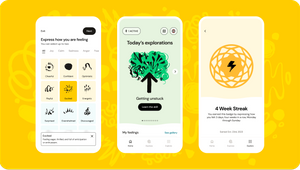
Building with AI: Inside the Creation of the ContextLens

In software engineering, it’s rare that you get to do something that has truly never been done before. At times you might be able to attack a problem from a fresh angle. That’s fun. But creating a completely new functionality is rare. That’s what made building ContextLens so exciting; it’s something that could actually change the way the internet is used.
What Is ContextLens?
ContextLens is our umbrella term for two novel technologies in partnership: One is an AI agent with 'read' access to a website’s back-end databases, and the other is a front-end mechanism that can inject components directly into a webpage. These combine in a tool that monitors which components are currently in the users’ viewport and can ask and answer questions. Together, it allows users to create their own homepage while obviating the need for any other page but the one ContextLens is on.
That’s because a user can ask for any other information the website has to offer via the AI agent hooked into the back end. No more click-click-clicking to get to what you need. You just ask for it, and it comes to you.
How it Works
We’ve built powerful tools for creating and deploying AI-driven conversational agents. At its core, our work provides a robust framework for intent classification, natural language understanding and database querying - enabling developers to create sophisticated systems that can interpret and respond to human questions with high accuracy using data from back-end databases.
Using fine-tuned LLMs, ContextLens transforms user questions into 'intent vectors,' which represent the underlying intent behind the questions. This transformation is crucial for understanding the user query’s context and purpose, allowing the system to generate more accurate, relevant responses.
Once the intent is classified, the library constructs and executes database queries based on the identified intent. The LLMs powering this step receive template PostgreSQL queries, which they can edit according to user needs. This step involves retrieving relevant data from the database, which is then used to generate a meaningful response. The querying process is optimised to ensure that the data returned is accurate and contextually appropriate, enhancing the overall user experience. The freedom of generation and the databases the models can access are strictly controlled, reducing risks of inaccuracies and mitigating security concerns.
A PostgreSQL query will simply return a tuple of data. One of the key differentiators for ContextLens is its context-aware interpretation of the data it receives. We not only provide the LLMs with the data required to answer a given question, but we perform dynamic, active fine-tuning at the answering step to teach the LLM precisely about that data’s shape and meaning.
ContextLens provides a comprehensive solution for building AI-driven conversational agents. Its robust framework for intent classification, natural language understanding and database querying lets developers create systems that can accurately interpret and respond to human questions, delivering a seamless, engaging user experience.
Ad Revenue Opportunities
ContextLens creates new advertising revenue opportunities by enabling the delivery of highly targeted advertisements that align with the user’s current interests. When users interact with the system, they’re in a focused state, seeking specific information, making them highly motivated viewers - an ideal audience for relevant advertising.
ContextLens also represents an exciting, new kind of ad real estate, one that’s as close to the user as we can get. Traditional online ads often struggle with engagement because they lack context and personalisation. ContextLens addresses this challenge by integrating advertisements directly into the conversational flow. For instance, if a user is inquiring about the latest running shoes, the system can unobtrusively present promotions or new arrivals from relevant brands within the same interface.
This contextual placement not only enhances the user experience by providing useful information but could also significantly increase ad engagement rates. Users are more likely to interact with ads that are pertinent to their current queries, leading to higher click-through and conversion rates. Advertisers benefit from reaching an audience that’s already interested in their offerings, maximising the return on their advertising spend.
Data insights gained from user interactions can inform better ad-targeting strategies. By understanding common queries and user intent, businesses can tailor their marketing campaigns to address their audience’s specific needs and preferences, creating a feedback loop that continuously improves the user experience and advertising effectiveness.
In essence, ContextLens transforms advertising from a disruptive necessity into a value-added service. It aligns the interests of users, advertisers and platform owners, creating a harmonious ecosystem where everyone benefits. Users receive timely, relevant information, advertisers reach a receptive audience and platform owners unlock new revenue streams without compromising user satisfaction.















